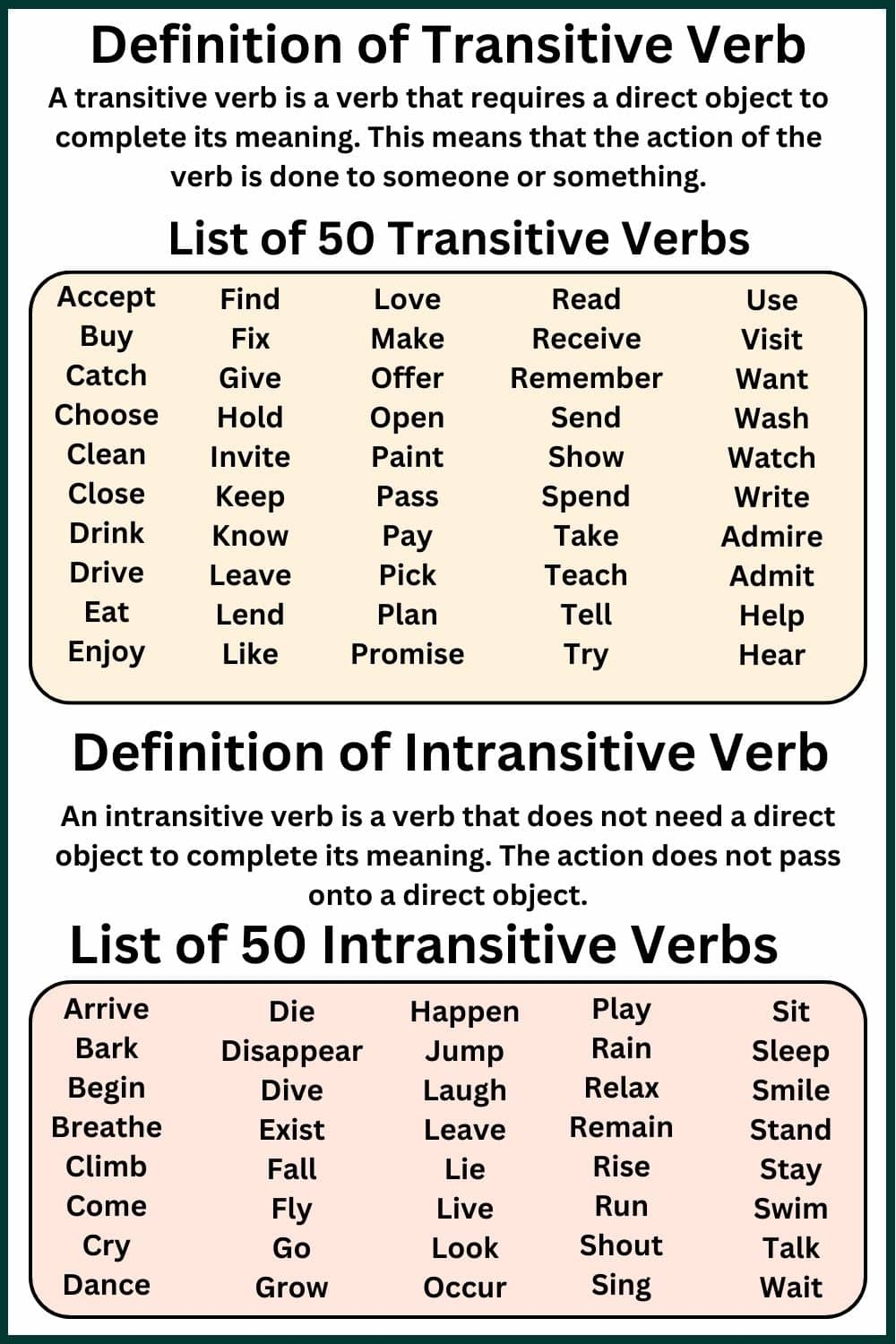Verbs are an essential part of any sentence as they express action or state of being. Understanding the difference between transitive and intransitive verbs is crucial for constructing grammatically correct sentences. Transitive verbs require a direct object to complete their meaning, while intransitive verbs do not.
Let’s explore some examples of transitive and intransitive verbs to grasp a better understanding of how they function in sentences.
Transitive and Intransitive Verbs Examples
Transitive Verbs: Transitive verbs require a direct object to complete their meaning. For example, in the sentence “She ate an apple,” the verb “ate” is transitive because it requires the direct object “an apple” to make sense.
Intransitive Verbs: Intransitive verbs do not require a direct object to complete their meaning. For instance, in the sentence “He sleeps peacefully,” the verb “sleeps” is intransitive as it does not need a direct object.
It is important to note that some verbs can function as both transitive and intransitive depending on how they are used in a sentence. For example, the verb “run” can be transitive in the sentence “He ran a marathon” and intransitive in “She ran quickly.”
Another example is the verb “write,” which can be transitive in the sentence “She wrote a letter” and intransitive in “He writes every day.”
Understanding the difference between transitive and intransitive verbs can help improve your writing and communication skills. By recognizing when a verb requires a direct object and when it does not, you can construct more coherent and precise sentences.
In conclusion, transitive and intransitive verbs play a crucial role in sentence structure and meaning. By being able to identify and use them correctly, you can enhance the clarity and effectiveness of your writing. Practice using both types of verbs in sentences to strengthen your grasp of grammar rules and improve your overall communication skills.
